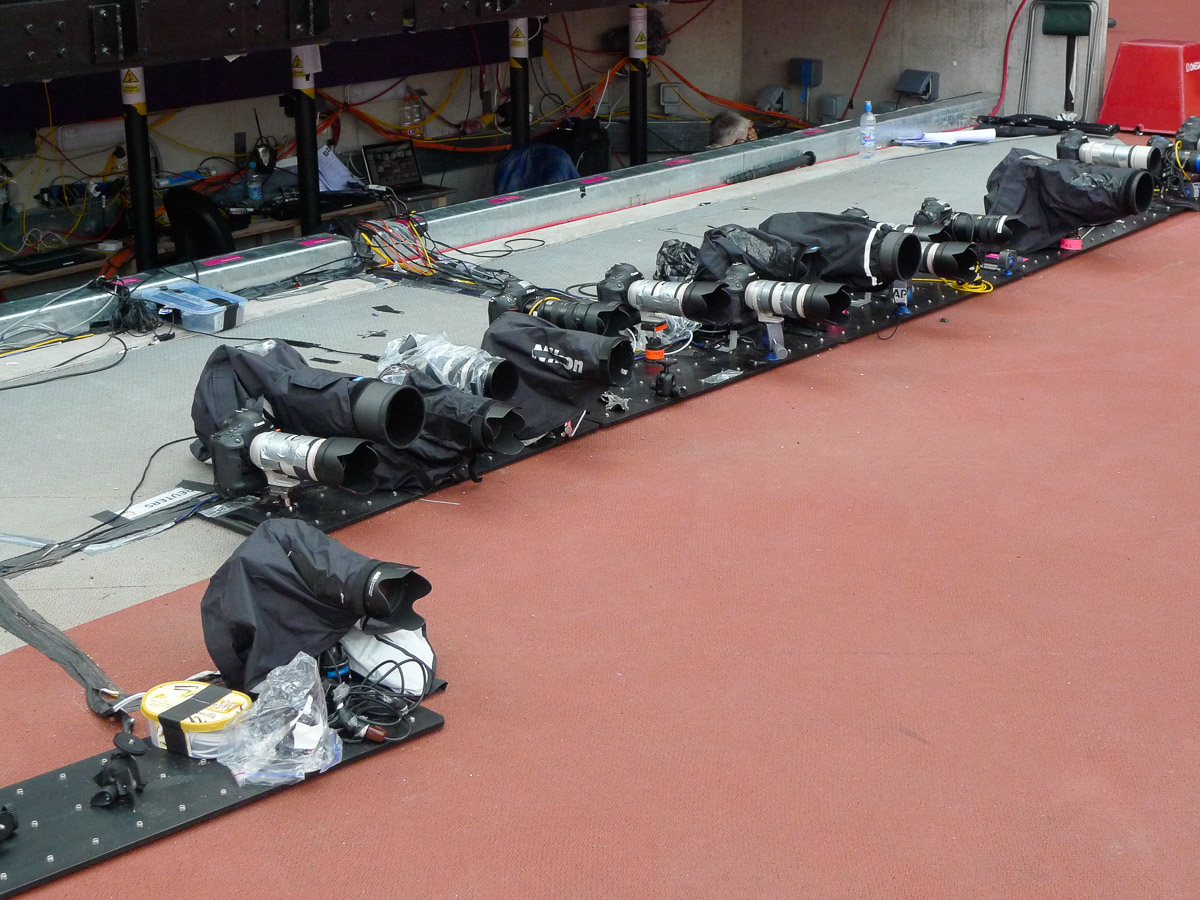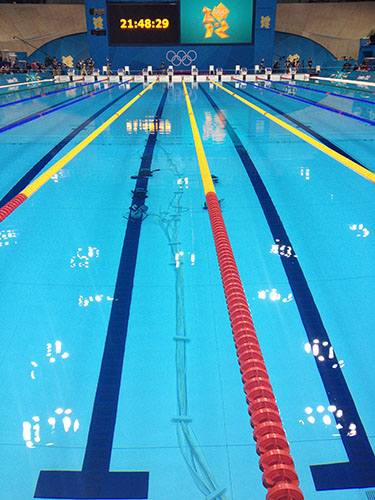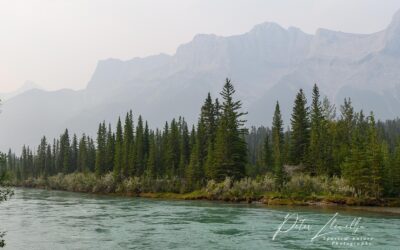Remote and robotic cameras are becoming an increasingly important tool in the arsenal of equipment used by sports photographers in their search for ever more unique images. First, just to explain the difference – a robotic camera is a fully controllable unit where the camera may be manned, tilted, zoomed, focused, exposure setting altered etc, in fact, just about everything a photographer could do with the camera in his hands apart from changing the lens. Robotic cameras are generally placed in position before the first day of competition and remain there until after the event has finished, in other words for the Olympics they may be in position for many weeks. A remote camera is one that is placed in position and set up by the photographer, it is fixed in that position and the photographer fires the camera by wire or radio signal. A remote camera is generally set up just before the start of a days competition and removed at the end of that days sport.
For many years now photographers have been placing cameras in locations where they cannot physically be and firing them by a variety of means, including cable, infra-red and wireless and the 2012 Olympic Games saw more remote cameras than perhaps ever before.
The major photo agencies, including Getty Images, AP, AFP and Reuters invested heavily in remote camera technology for London, including purchasing and installing a number of completely robotic cameras. We had been involved throughout the test events in checking the viability of fully robotic cameras and how they could be operated and both Nikon and Canon finally produced workable models in time for the Games.
However it was not just the cameras that had to be installed, in many cases well before the first athletes set foot in any arena, but also miles of Cat 5 and Cat 6 data cables, power supplies, control points, and in most cases the cameras could not be assessed after the start of competition so any failure meant that whole unit may be out of commission for the rest of the Olympics. As many of the cameras were positioned either above the field of play or above spectators every installation had to be carefully checked by our staff to ensure that it was safely rigged, and that every piece of equipment that could become detached had it’s own safety cable, much of which can be seen in the image above.
To operate the robotic cameras special stations were set up so the photographers could get an overall view of the sport. Although one can set up the camera by using a computer screen to check the angles, zoom and focus, it is not yet possible to use the screen successfully to fire the cameras as there is too much delay in viewing the monitor pressing the fire button and the shutter actually actuating. Therefore, once the cameras were set, the photographer has to view the action and still press the fire button manually according to what he sees. The big advantage however is that a few seconds later the image is on the screen and he can then make instant adjustments to the camera settings if required.
As the technology improves I think the use of robotic cameras will become an even more essential part of the image taking process for the big agencies. The average photographer will have to stick to the use of standard remotes as the cost of robotics will undoubtedly remain prohibitive for most.
The more traditional remote cameras were still used in many locations such as the image below which is directly in front of the photographers moat at the finish straight of the track.. These were again fired either by directly connected wire, in many cases also transmitting the image back to the photographers computer, or by Pocket Wizard radios. The issue with radios for firing cameras at an event like the Olympics raises all sorts of problems, and is not always entirely reliable due to the huge amount of radio traffic across all frequencies at every venue. In fact the use of wireless internet connections using dongles was frowned upon for the same reasons. The most effective internet connections being a wired Ethernet connection from the working positions.
In some locations and sports, particularly the equestrian jumping events there was a further problem with remote cameras. Due to the close proximity of the cameras to the sport itself, and in this case the horses, the noise of multiple shutters firing simultaneously became an issue. Consequently we had to insist that cameras placed in these location had a sound deadening device fitted (known as a blimp) These had to be either a soundproof bag such as the Camera Muzzle or a completely soundproof box such as those used on film sets. Incidentally, the camera muzzle is an extremely useful tool for wildlife photographers under certain circumstances.

Remote cameras at the end of the finish straight, Olympic Stadium, London, England – August 2012 – Photo: Peter Llewellyn
All photographs in this article courtesy of Dillon Bryden except where indicated.






